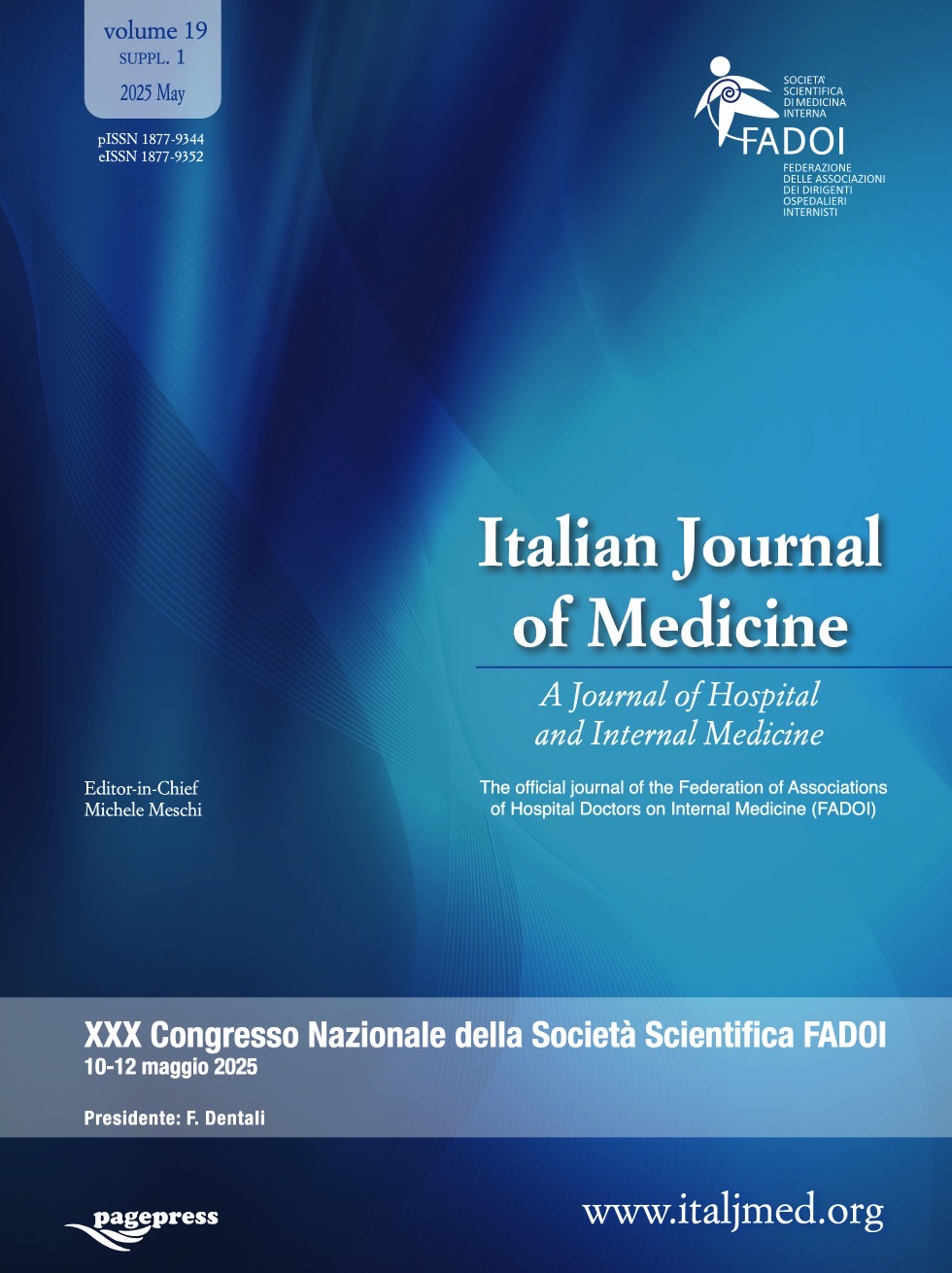XXX FADOI Italian Congress | 10-12 May 2025
Vol. 19 No. 1(s1) (2025): XXX FADOI Italian Congress | 10-12 May 2025
P50 | A paradigmatic case of secondary hypertension
L. Criscuolo1, R. Ruocco2, A. Piacevole2, A. Villani2, M. Del Core2, A.I. Facciuto2, A. Padula3, C. Carusone3, D. Cozzolino3, R. Nevola4 | 1OORR Area Stabiese, Castellammare di Stabia (NA), 2Università degli Studi della Campania Luigi Vanvitelli, Napoli, 3AOU Vanvitelli, Napoli, 4AORN Moscati, Avellino, Napoli
Publisher's note
All claims expressed in this article are solely those of the authors and do not necessarily represent those of their affiliated organizations, or those of the publisher, the editors and the reviewers. Any product that may be evaluated in this article or claim that may be made by its manufacturer is not guaranteed or endorsed by the publisher.
All claims expressed in this article are solely those of the authors and do not necessarily represent those of their affiliated organizations, or those of the publisher, the editors and the reviewers. Any product that may be evaluated in this article or claim that may be made by its manufacturer is not guaranteed or endorsed by the publisher.
Published: 26 August 2025
55
Views
0
Downloads







